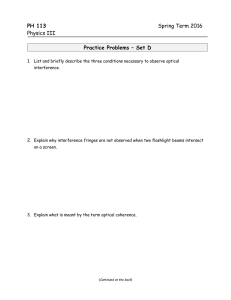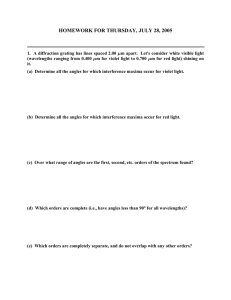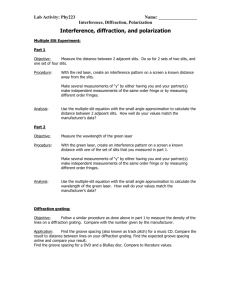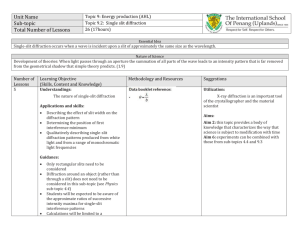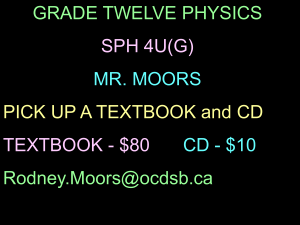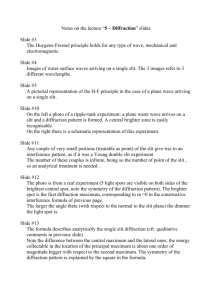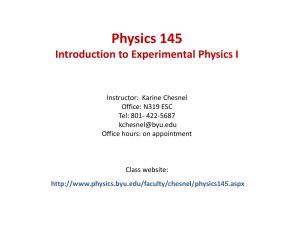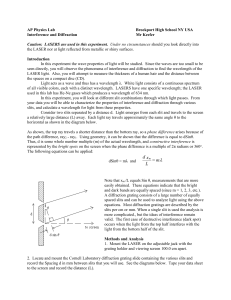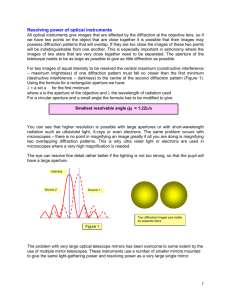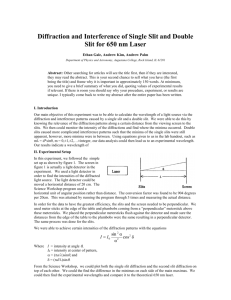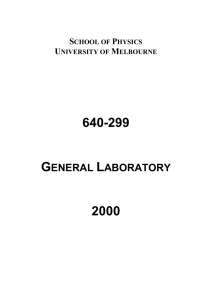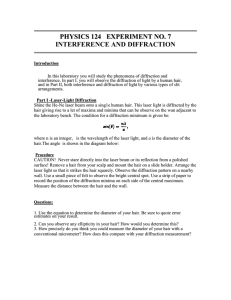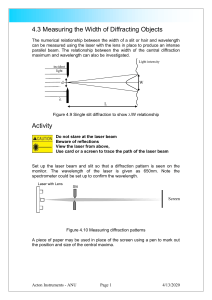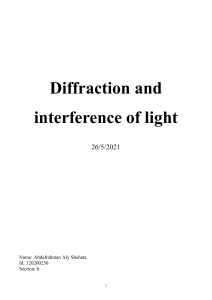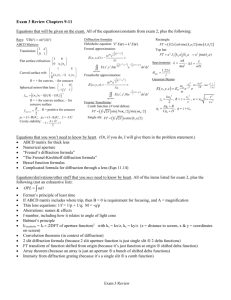Notes on the lecture “2 – Reflection, Refraction” slides
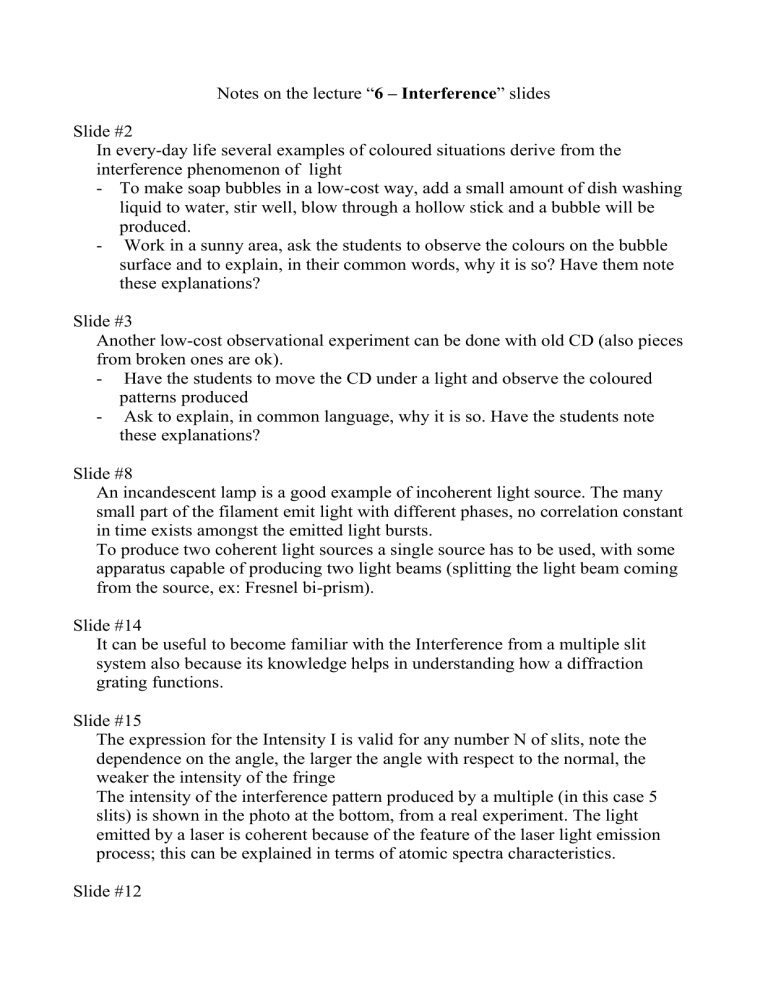
Notes on the lecture “ 6 – Interference ” slides
Slide #2
In every-day life several examples of coloured situations derive from the interference phenomenon of light
To make soap bubbles in a low-cost way, add a small amount of dish washing liquid to water, stir well, blow through a hollow stick and a bubble will be produced.
Work in a sunny area, ask the students to observe the colours on the bubble surface and to explain, in their common words, why it is so? Have them note these explanations?
Slide #3
Another low-cost observational experiment can be done with old CD (also pieces from broken ones are ok).
Have the students to move the CD under a light and observe the coloured patterns produced
Ask to explain, in common language, why it is so. Have the students note these explanations?
Slide #8
An incandescent lamp is a good example of incoherent light source. The many small part of the filament emit light with different phases, no correlation constant in time exists amongst the emitted light bursts.
To produce two coherent light sources a single source has to be used, with some apparatus capable of producing two light beams (splitting the light beam coming from the source, ex: Fresnel bi-prism).
Slide #14
It can be useful to become familiar with the Interference from a multiple slit system also because its knowledge helps in understanding how a diffraction grating functions.
Slide #15
The expression for the Intensity I is valid for any number N of slits, note the dependence on the angle, the larger the angle with respect to the normal, the weaker the intensity of the fringe
The intensity of the interference pattern produced by a multiple (in this case 5 slits) is shown in the photo at the bottom, from a real experiment. The light emitted by a laser is coherent because of the feature of the laser light emission process; this can be explained in terms of atomic spectra characteristics.
Slide #12
The photo is from a real experiment (5 light spots are visible on both sides of the brightest central spot, note the symmetry of the diffraction pattern). The brighter spot is the first diffraction maximum, corresponding to m =0 in the constructive interference formula of previous page.
The larger the angle theta (with respect to the normal to the slit plane) the dimmer the light spot is.
Slide #13
The formula describes analytically the single slit diffraction (cfr. qualitative comments in previous slide)
Note the difference between the central maximum and the lateral ones; the energy collectable in the location of the principal maximum is about one order of magnitude bigger with respect to the second maximum. The symmetry of the diffraction pattern is explained by the square in the formula.
Slide #15
The photo shows the diffraction pattern in the case of three different colours
(small range of wavelength in the red, green and blue region of the visible light spectrum); the central maximum and two lateral ones are recognisable.
In the case of white light (the complete spectrum of visible light) the diffraction patterns of the diverse wavelength zones do superimpose and the result is a blurred image.
Slide #16
A low-cost square slit experiment can be done with a piece of cloth with not too closed texture
Looking toward a lamp light it is possible to see a diffraction pattern similar to the one in the photo at left (less clear pattern because the laser light is very collimated).
